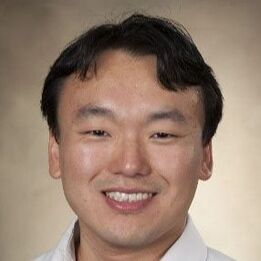
Dr. Kim is an Associate Professor of the Department of Chemical and Biological Engineering. He received his B.S. in Chemical Engineering and B.A. in Biochemistry from Lafayette College (Easton, PA), and his Ph.D. in Chemical and Biochemical Engineering from the University of Maryland, Baltimore County (Baltimore, MD). He further received post-doctoral training in oncology from Samsung Biomedical Research Institute (Seoul, Korea) and joined UA in 2012. He currently serves as an Executive Committee member of the American Chemical Society Division of Biochemical Technology and an editorial board member of Molecular Medicine Reports. He has over peer-reviewed 50 publications, and his research is currently funded by the National Science Foundation and the National Institutes of Health. (http://ykim.eng.ua.edu/).
Representative Publications
- Relationship between Stemness, Reactive Oxygen Species, and Epithelial-to-Mesenchymal Transition in Model Circulating Tumor Cells. S. R. Brown, J. C. Bates, A. D. Avera, Y. Kim. Cells Tissues Organs. Jun: 1-12, 2021.
- In vitro Demonstration of Salinomycin as a Novel Chemotherapeutic Agent for the Treatment of SOX2-positive Glioblastoma Cancer Stem Cells. J. W. Magrath, W. R. Raney, Y. Kim. Oncol Rep. 44: 777-785, 2020.
- Targeting Hyaluronan Interactions for Glioblastoma Stem Cell Therapy. J. S. Hartheimer, S. Park, S. S. Rao, Y. Kim. Cancer Microenvironment 12: 47-56, 2019.
- Fluid shear stress induces cancer stem cell-like phenotype in MCF7 breast cancer cell line without inducing epithelial to mesenchymal transition. U. L Triantafillu, S. Park, N. L. Klaassen, A. D. Raddatz, Y. Kim. International Journal of Oncology 50: 993-1001, 2017.
- ROCK Inhibition Facilitates In Vitro Expansion of Glioblastoma Stem-Like Cells. S. G. Tilson, E. M. Haley, U. L Triantafillu, D. A Dozier, C. P. Langford, G. Y. Gillespie, Y. Kim. PLoS One 10: e0132823, 2015.
Research Interests
Kim Lab is working on the bioprocessing expansion of cancer stem cells to better assist translational medicine. Cancer stem cells (CSCs) are considered the stem cell-like pluripotent cancer cells that cause relapse in patients even after the most rigorous treatment. Pharmaceutical companies, however, typically use several decades-old cancer cell lines during their drug development. It is becoming increasingly recognized, however, that drug development must be based on CSCs to develop better drugs that target the "real culprit" in tumors. Therefore, our work aims to bridge the oncologists with the engineers by developing large scale quantities of CSCs using engineering principles and systems biology tools (e.g. proteomics) for the mass production of CSCs from primary patient tissues and cell culture. By doing so, we hope to assist in the drug development by providing a more relevant and closer-to-clinic resource of cancer cells.

